Description of the Unit – Students will explore the fascinating Mexican folk art known as Amate bark painting. Using their observations of the art form, students will crumple brown kraft paper (a part of this project they love) to give it a bark-like texture, and paint their own painting onto it in the same bold and bright colors as used by Mexican artisans of Amate.
Activity statement – Amate is the Nahuatl name of a type of bark paper, first manufactured in pre-Colombian Mexico (in the Puebla region) and used for many centuries. Students truly enjoy learning about how it was first made: the bark was left to soak in water overnight, then pounded into flat shapes using stones.
The Amate bark was originally used as a form of pictographic communication, typically for record-keeping, rituals, and to express plans and ideas with others.
As is typical of European conquest, the arrival of the Spanish effectively put an end to the widespread use of Amate, but in the Mexican states of Veracruz and Puebla, some people continued to use the paper. In the 20th century the Otomi people of Mexico started to sell the paper commercially, and its use was adopted by regional artisans as a “new” indigenous craft, encouraged in part by a new wave of nationalism and pride in Pre-Columbian craft that the Mexican government and NGO’s began to tout. Nowadays many wonderful mexican artisans, especially from the state of Guerrero, have expanded Amate bark painting into a vibrant, thriving art form.
Amate painting uses bright, bold, sometimes fluorescent colors, and typically depicts birds, cacti, flowers and other images of nature, along with ornate, organically shaped patterns and designs that embellish the main subjects. Additionally all elements are outlined, usually in black. Not only is it mesmerizing to look at, but the feel of the soft, velvety bark delights the more tactile of us. If possible when teaching this lesson have an Amate painting or two on hand for students to touch as well as observe.
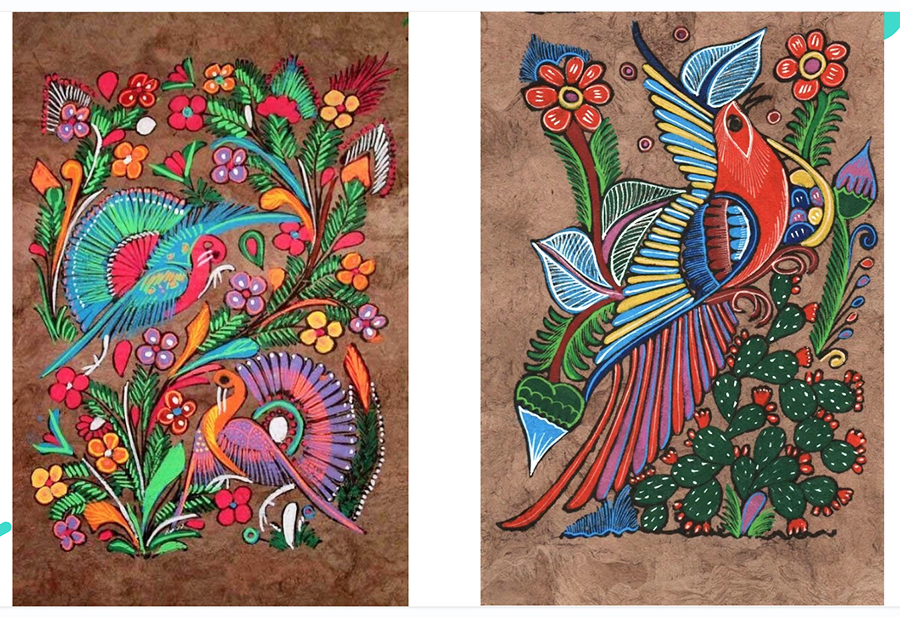
To make the Amate painting, students will first get to turn their brown kraft paper into “bark”. They will first crumple the paper several times into a ball, and then use smooth rocks, about the size of their little hands, to pound on the crumpled paper. Not only will this give the paper more a bark-like look, but the texture will be similar to that of the soft Amate bark. They will be asked to depict any themes from nature they would like, first drawing it in pencil. It will be up to the student whether they add the black outline next, or wait to paint the images and then outline them once dried. It’s fun to observe their decision-making process, and see what works best for each kid.
Objectives –
Students will: learn the history of Amate painting, and observe how this art form is currently expressed in Mexico. Using some fun methods for turning plain brown paper into “bark,” students will paint onto it with similar colors, and use similar subjects, and include the characteristic black outlines.
Goals – Students should…
Understand:
- The relationship between contrasting colors in Amate painting
- How outlining is used for effect in Amate painting
- How to locate patterns within representational imagery
Know:
- Where Amate originates, and what the paper is made from
- How to identify contrasting colors
- What is meant when referring to texture
Be able to:
- Describe what Amate was originally used for
- Choose bright and contrasting colors for their painting
- Outline all elements of their painting
Resources and materials –
- Examples of Amate paintings (try to have a couple of real ones so that students can feel the bark)
- Brown craft paper
- Small, smooth rocks
- Pencils
- Black sharpies
- Bright, vivid paint (I used tempera and acrylic)
- Paint brushes
- Cups
- Paper towels
Questions –
(While sharing real Amate paintings)
- What does this feel like?
- What do you think this is made out of?
- What images do you see?
- What do you think of the colors? What kinds of colors are used? Why are the colors organized this way, what do they do for each other?
- Do you think this looks realistic? Why or why not?
- What else do you notice about how this was painted? (Without keading, guide students towards observations of the shapes, the patterns, the designs, and the outlining)
- What does outlining do for the images?
- What other themes from nature could you paint?
- How can we make our paper look and feel like bark?
Evaluation – Did students:
- Express an understanding of the characteristics of Amate painting?
- Use colors to create contrast?
- Outline all elements of their imagery?
Informal:
- Group discussion
- Oral responses to essential questions
- Classroom observations
- One finished piece
The following are examples of 3rd grade students’ Amate paintings. I apologize if some are out of focus. Some of these were completed at school, while others were completed at home during distance learning, hence why some of those photos are fuzzy.


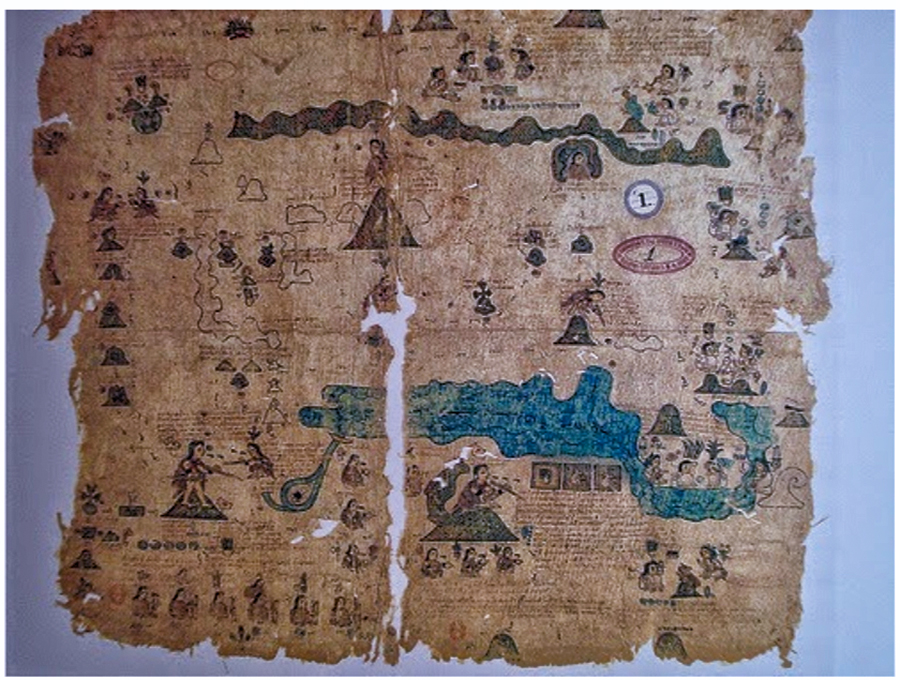

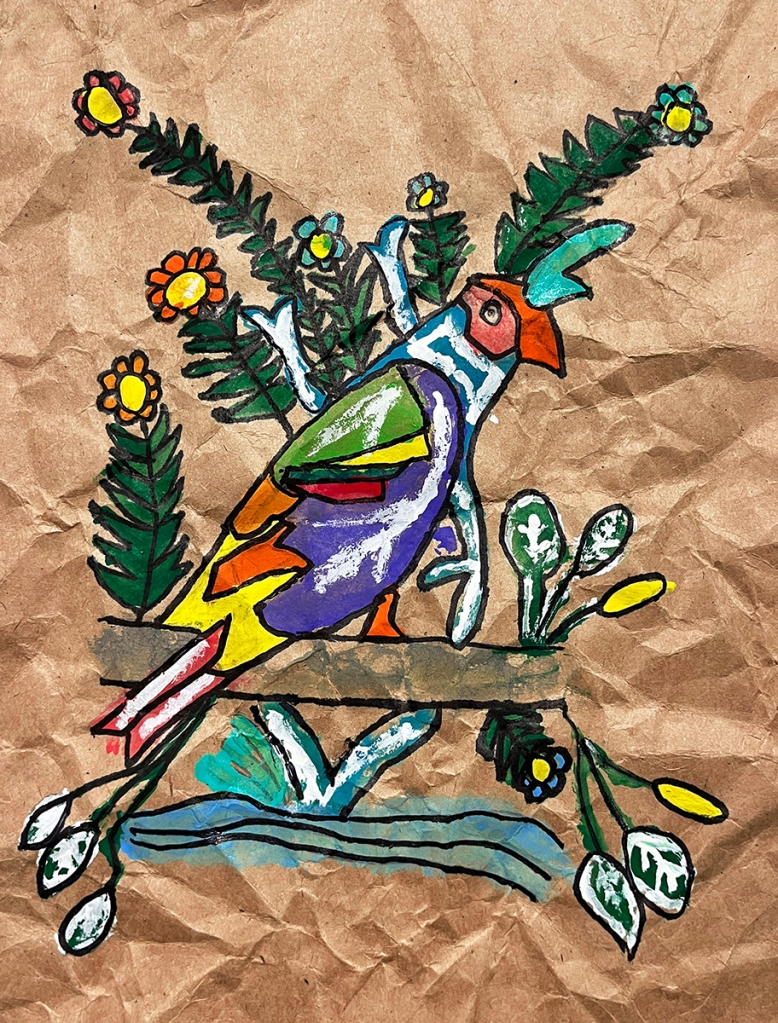
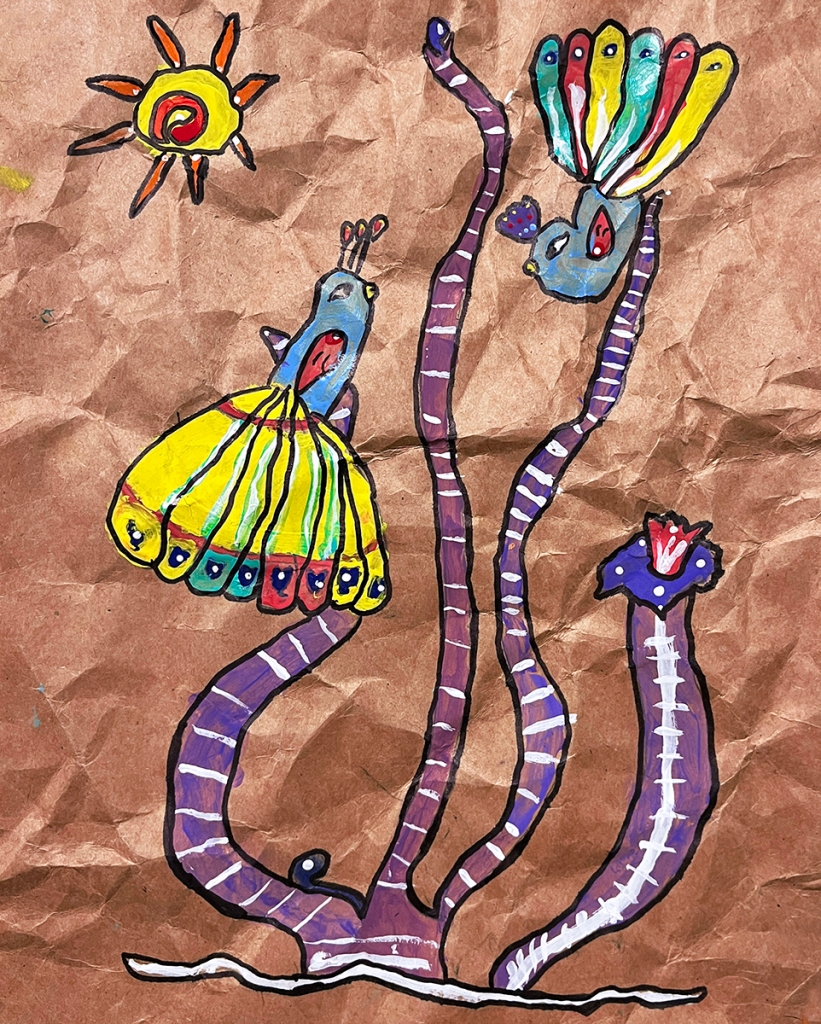
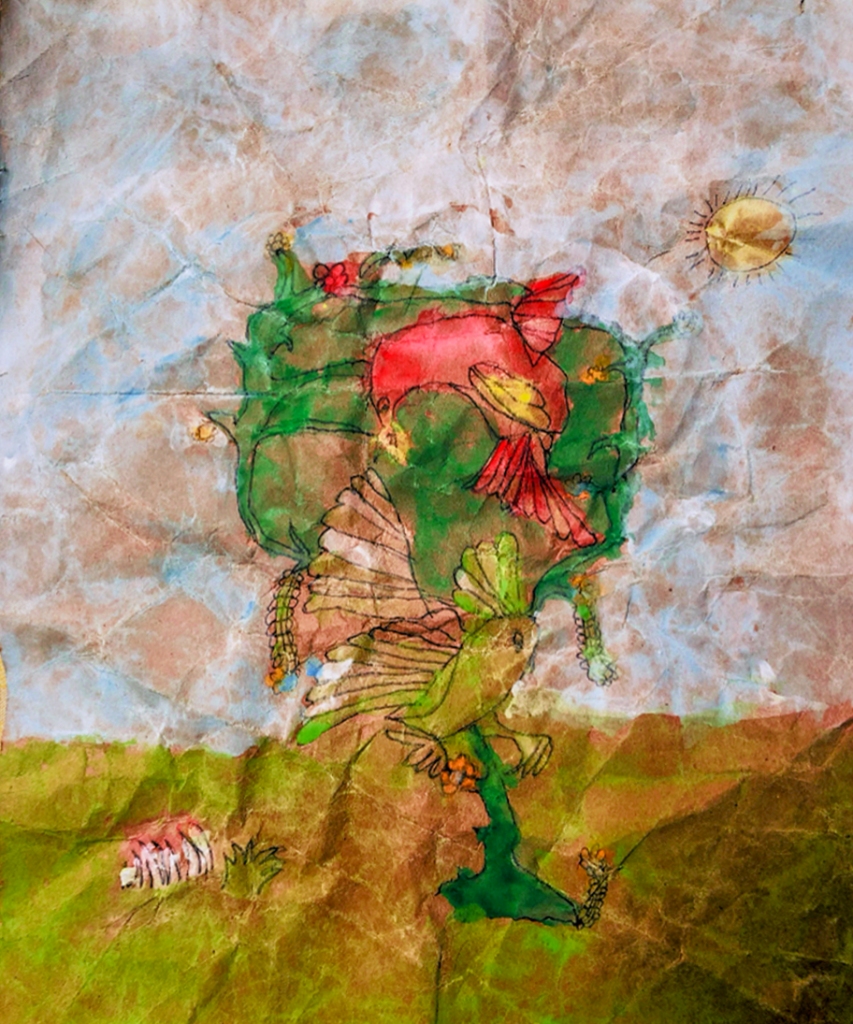
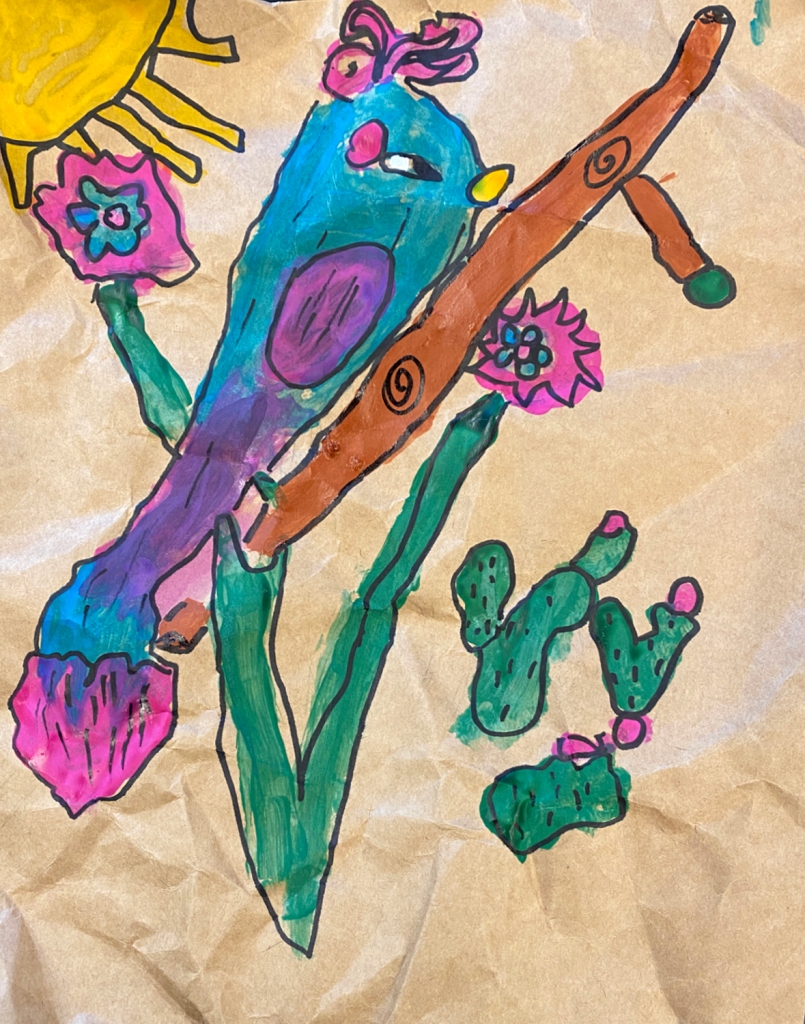
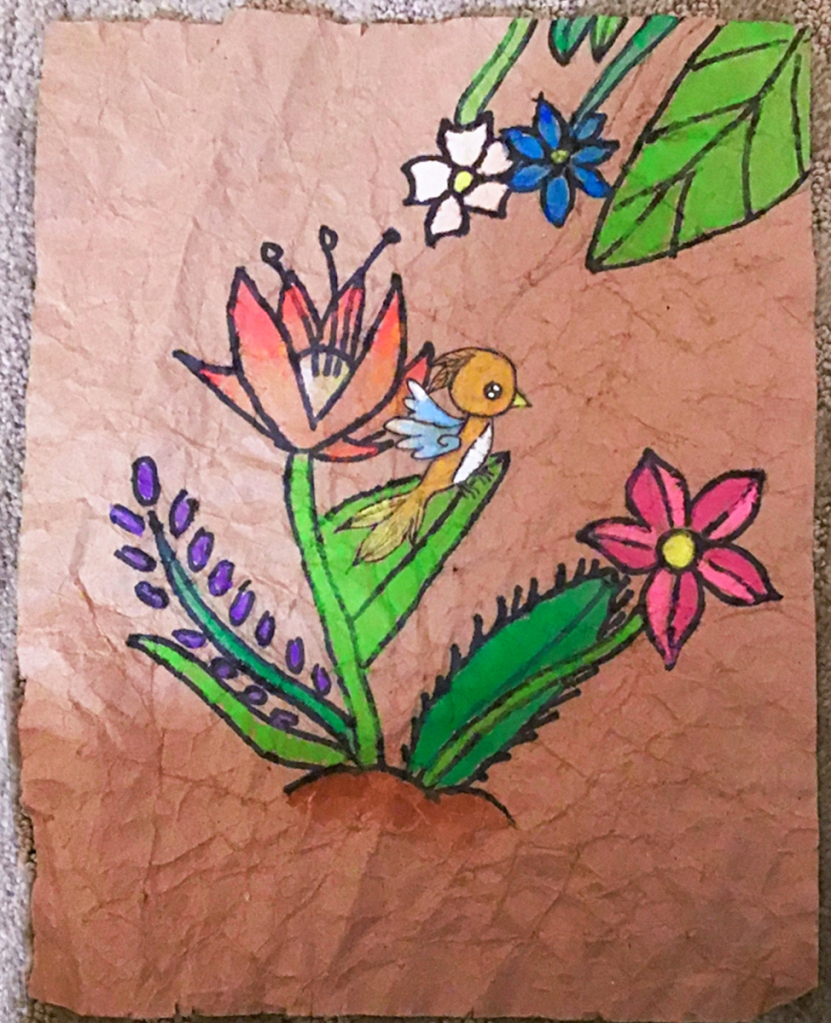
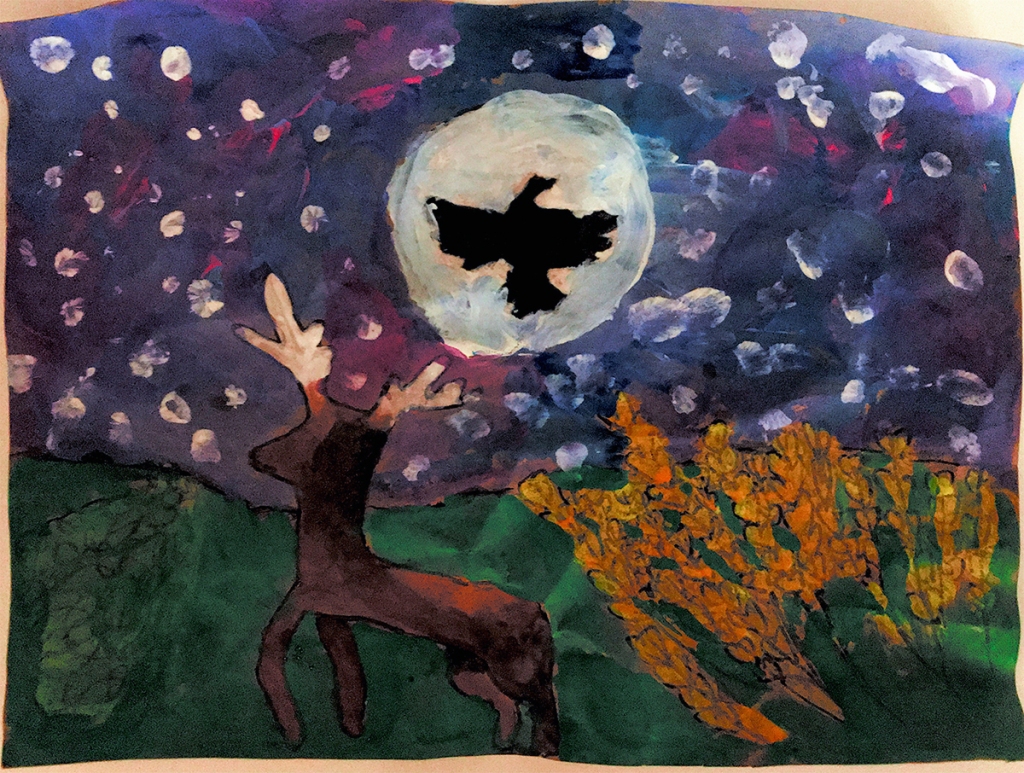

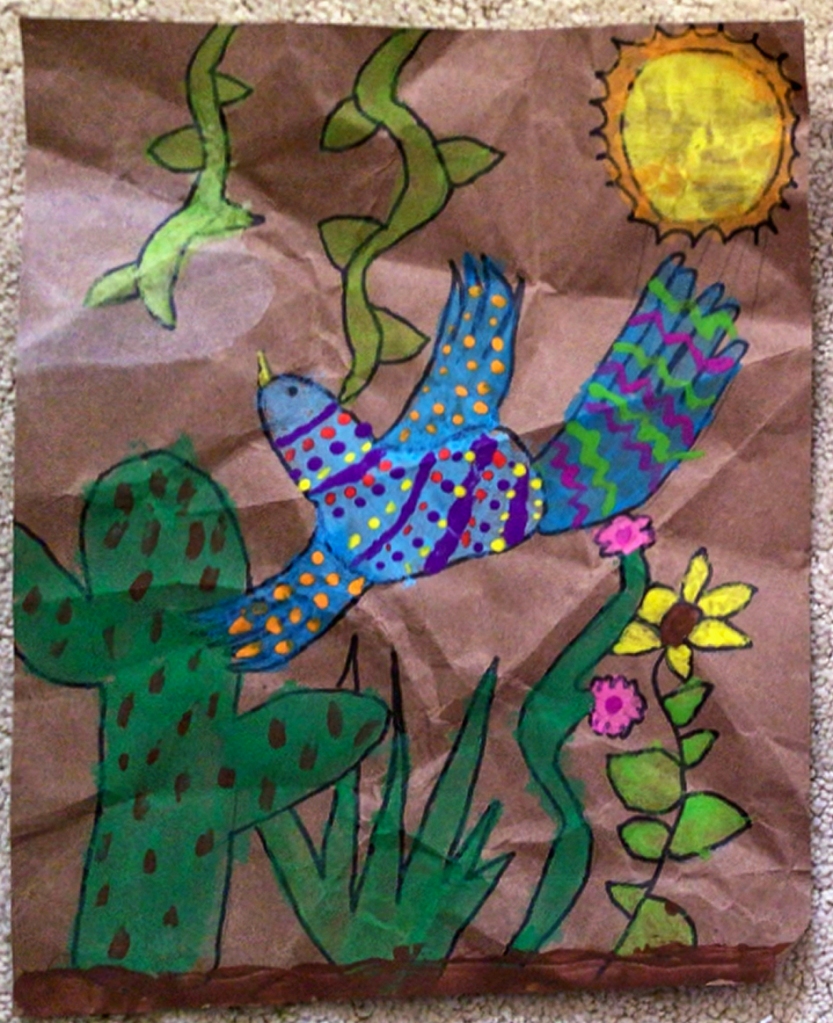


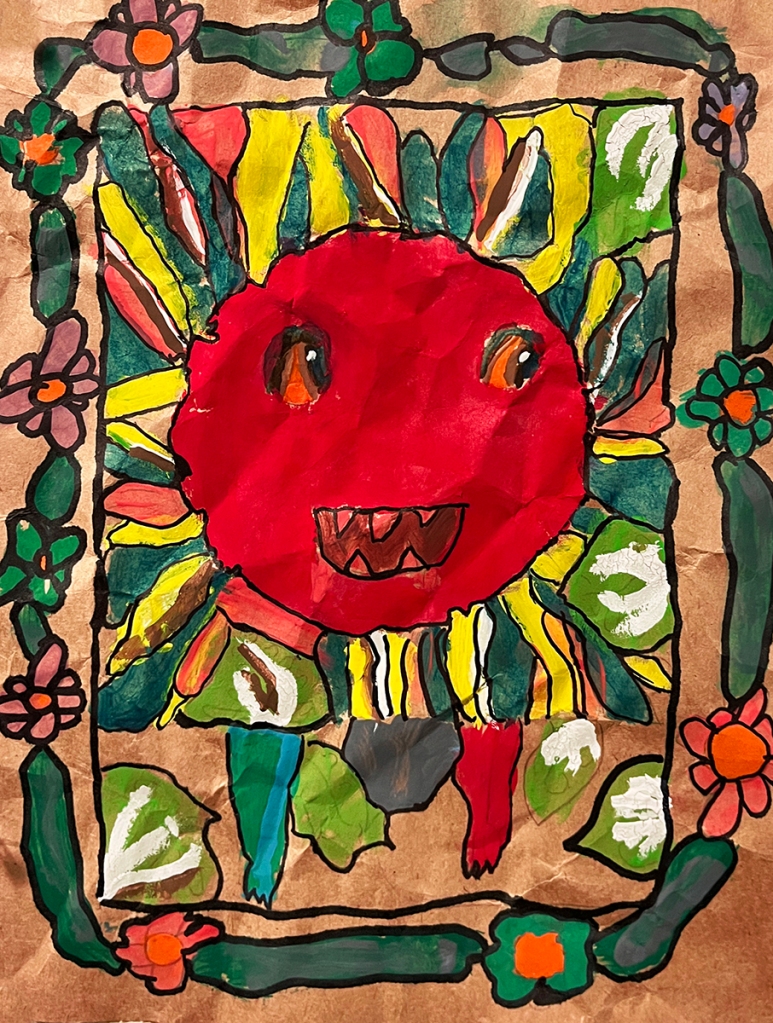


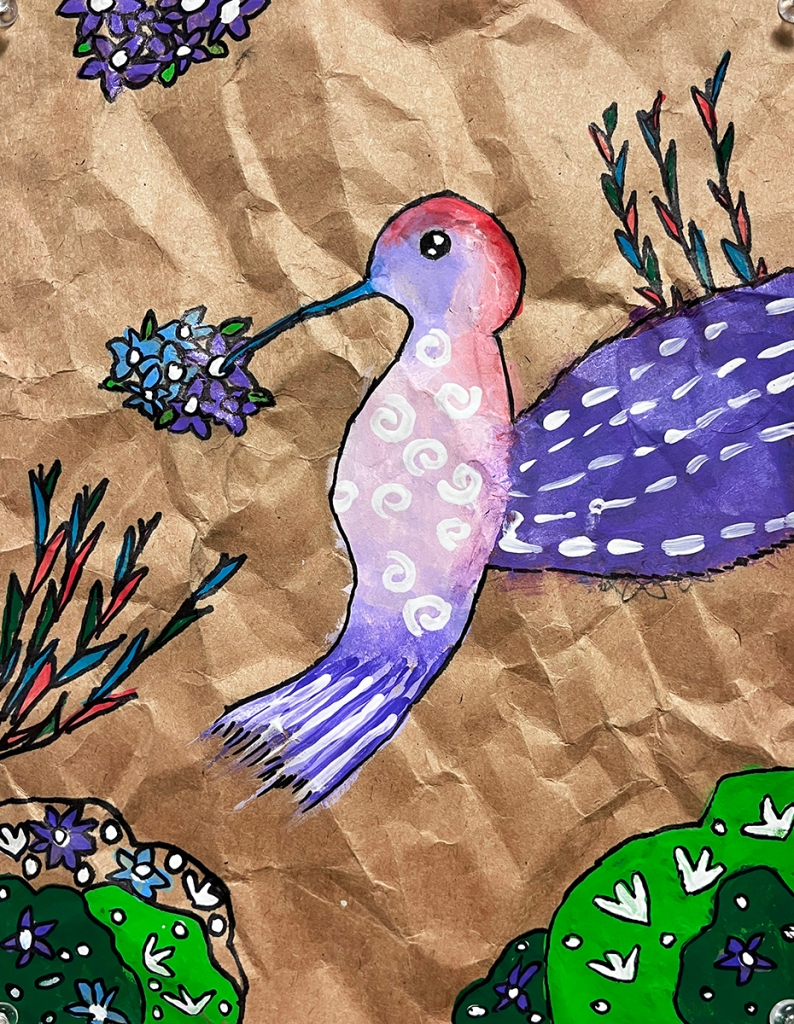
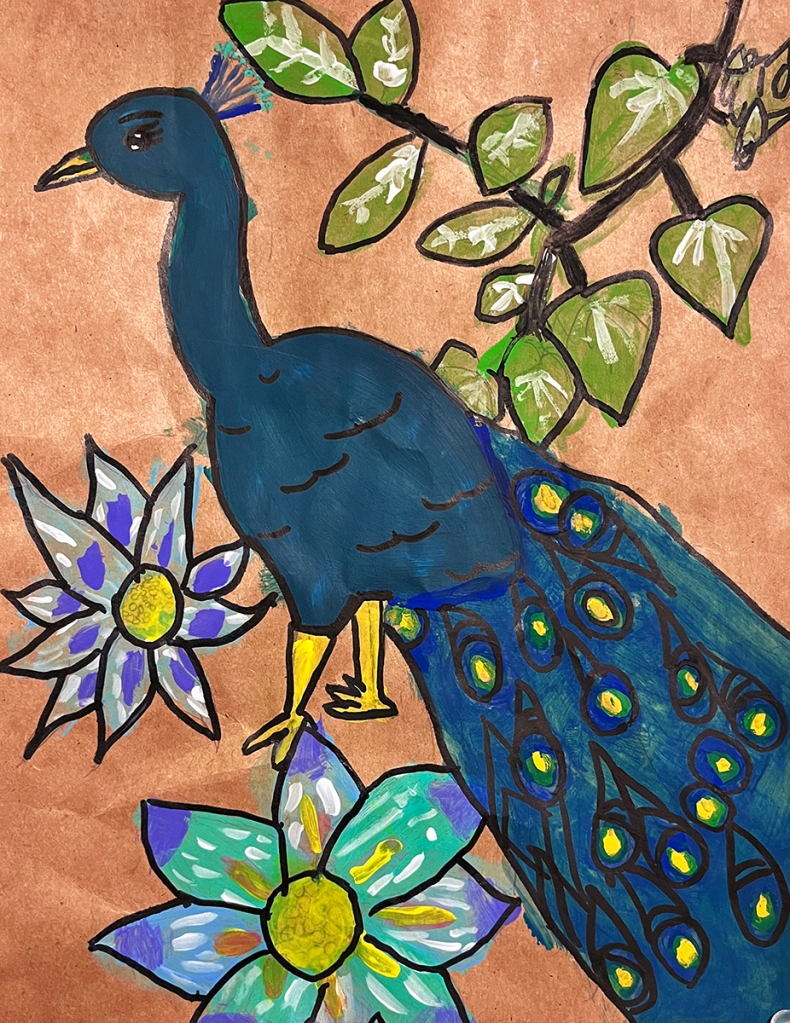

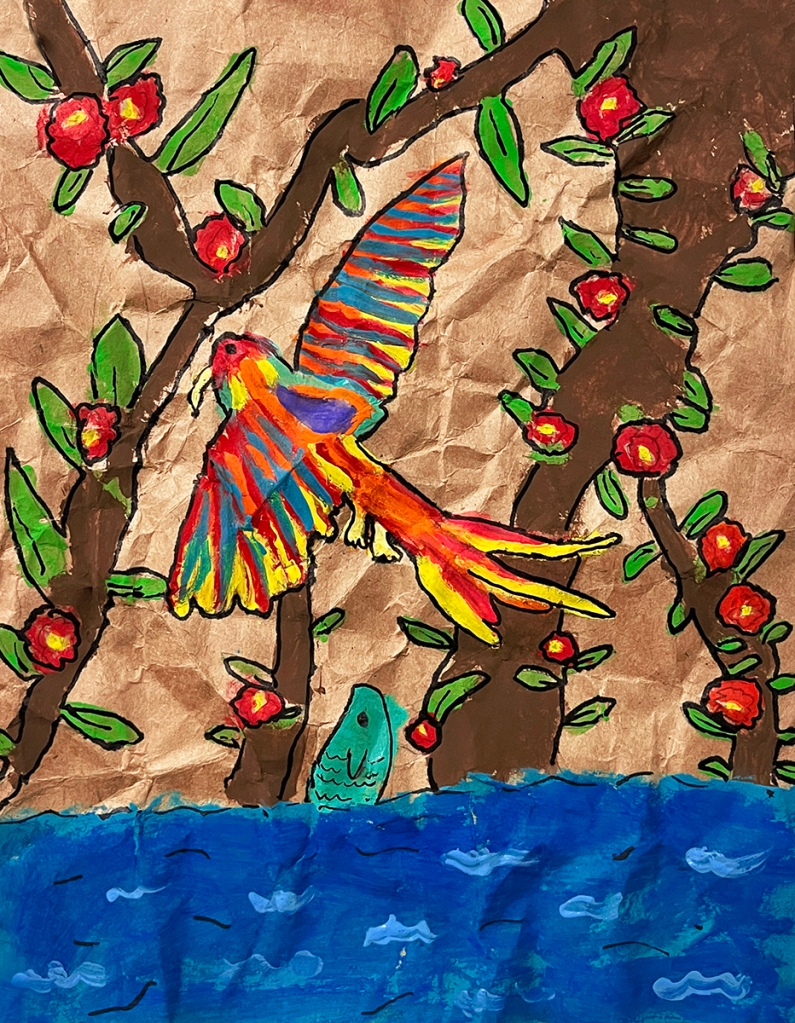
It’s a pity you don’t have a donate button! I’d without a doubt donate to this brilliant blog! I suppose for now i’ll settle for book-marking and adding your RSS feed to my Google account. I look forward to new updates and will share this site with my Facebook group. Chat soon!
Yes, I’ve been meaning to set one up–life as an art teacher & photographer has me so busy I have not been able to find the time. Stay tuned, however, may come soon! Thank you for your support, I very much appreciate it. Take care! Anita